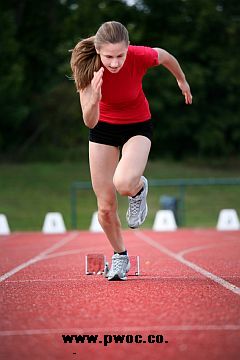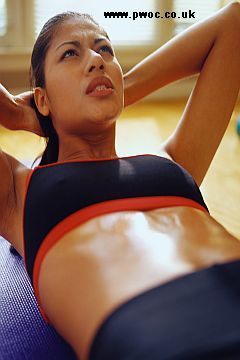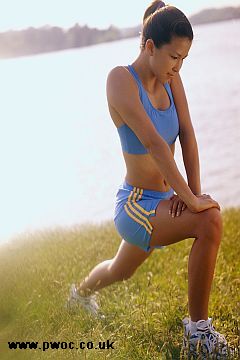Pilates For Sport in Petts Wood 
Pilates is essential for sports perfromance.
Every sport involves a functional fitness for the specific demands placed on the body from the sport. Functional fitness means that you are training your body for what it has to do most of the time. Many sports and arts look at moving the body from a strong centre. Martial arts and Tai Chi rely on building up the energy within the centre. All good dancers and gymnasts rely on a strong waist to support their elegant movements and to give them control over their balance. In Yoga, if you engage your "moolabandha" you draw up your pelvic floor muscles and abdominal muscles to support your spine and internal organs. Your abdominal muscles are part of the support structure for your spine. With the correct strength in your lower back region we can support and control ourselves throughout the day. Our abdominal muscles also support our internal organs in place, as well as our lumbar spine. Working and moving our bodies with a supported centre gives us more balance and control. Pilates exercises remind us how to use and strengthen our important core muscles, and also show our bodies how to work from a supported centre.

Physical fitness is the first prerequisite of happiness. Joseph Pilates
Our bodies are designed to move, as adults many of us crave movement, and we find it through sport, dance or outdoor activities. Many injuries occur when there is a sudden jolt or an over-extended movement within the body. By being more aware of how your body moves you can prevent many of these problems. Adding the concept of fluid movement into exercise helps you to listen to and be more aware of how your body moves and its range of movement. With many Pilate exercises you are focus on the exact movement of particular muscle groups, while holding other parts of your body in isolation and controlling your breathing. By focusing on every movement, we soon improve our muscle memory and make the exercise more exact and beneficial. With this clarity of movement, we begin to see the knock affect in the rest of the body and achieve a better balance in our health too. Analysis of movement is vital in finding out what causes injuries and pain. While the body is in perfect alignment structurally and the muscles are all balanced then normal movement can arise which, is both free of pain and flowing. As an osteopath I see on a daily basis, that any disruption to the structure of the body and normal movement almost always leads to overuse injuries, joint dysfunction and pain. If let alone like this the body adapts itself and learns to function in an abnormal way with chronic pain resulting. This is why Pilates is so good to re-educate the body into a better alignment, balance of muscles, and correction of movement. Many patients who have done my Pilates classes have seen a good reduction of pain and require less osteopathic treatment.

At the start of taking up Pilates you need to undo/unlearn all those bad habits and replace them with good form of movement and muscle control to restore natural mobility. It takes a team of muscles to move bones and they nearly all work in groups. One may be the primary mover while others add subtle direction or fix a bone in place, and opposing muscles have to release their tension in order for the action to take place. This group action is dependent on each member of that group fulfilling its role. No matter how fit you are, understanding the basic principles are the key to the profound results Pilates can offer. Pilates requires you to be constantly aware of how you are moving, it requires you to focus your mind on each and every movement that you make. It is very much a mental exercise as it is physical, working on the neurological pathways from the mind to the muscles. This develops your body's sensory feedback, or kinaesthetic sense, allowing you to know where you are in time and space.
The Pilates way is based on a mind-body connection, allowing for a more holistic fitness approach to your sport.
Pilate exercises are a great compliment to many sports such as tennis, golf, athletics and football. Many top sportsmen are now making Pilates an integral part of their fitness programme to enhance their performance, improve their technique and keep their bodies strong, supple and injury free. Pilates is especially effective in building core stability, improving focus and injury prevention. All sports have their own key patterns of movement and repeated use of these movement patterns can result in muscular imbalance. Less relevant muscle groups can become weak and inefficient, with the more predominant muscles becoming bulky and tight. Pilates focuses on the body as a whole, aiming to rebalance muscles and improve postural alignment. Unlike weight training, which can be very useful for gaining strength in individual muscle groups, Pilate movements are generally more complex and therefore recruit a higher number of muscle groups within each exercise. Pilate exercises also require a greater range of joint motion, and therefore work to stretch as well as strengthen muscles. Who couldn't benefit from a greater range of motion, especially as we age

Sports need a supple and strong spine.
Many runners only run believing that running alone provides them with a very rounded exercise program. However, while running is an excellent endurance workout, it can lead to imbalances in the body. Those imbalances can injure runners and must be addressed to continue the activity in a healthy and beneficial way. Pilates for running is an excellent complement to any runner's routine as it can help strengthen muscles that are not used specifically for running. There are several different kinds of runners. There are marathoners and other long distance joggers who may or may not be competitive; there are 5km runners who also may or may not compete and then there are casual runners who just want to run few miles a week to keep fit. No matter the type of runner, the same muscle groups are used to propel the body forward. Principally the hip flexors pull the thigh forward, the quadriceps to extend the knee then tibialis anterior to raise the foot and prepare to plant the forward foot. Then the leg is pulled back using the gluteals and hamstrings. The problem here is that duringthe running gait, the runner's torso is moving in the sagittal plane and the muscles that support movement in the horizontal and frontal planes are not challenged specifically. As a Pilates instructor it is very important to work a runner in the horizontal and frontal planes. Pilates for running can also help runners with core strength so they can be more upright in their posture as well as breath control.




